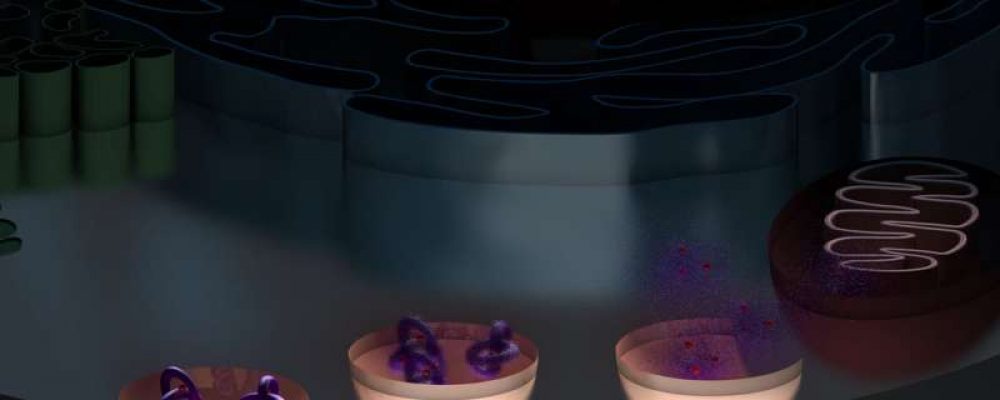Researchers from NYU Abu Dhabi’s (NYUAD) chemistry program and colleagues from the University’s biology program have developed and studied the biological activity of five new, metal-organic hybrid knotted molecules, termed metal-organic trefoil knots (M-TKs). These molecules can effectively deliver metals to cancer cells, demonstrating the potential to act as a new category of anti-cancer agents.
In a study published in the journal Chemical Science, NYUAD Research Scientists Farah Benyettou and Thirumurugan Prakasam from the Trabolsi Research Group, led by NYUAD Associate Professor of Chemistry Ali Trabolsi, report that these nanoscale, water-soluble M-TKs showed high potency in vitro against six cancer cell lines and in vivo in zebrafish embryos. Zebrafish-related studies were performed by NYUAD Postdoctoral Associate Anjana Ramdas Nair from the Sadler Lab.
The M-TKs, generated by metal-templated self-assembly of a simple pair of chelating ligands, were well tolerated in vitro by non-cancer cells but were significantly more potent than cisplatin, a common chemotherapy medication, in both human cancer cells––including those that were cisplatin-resistant––and in zebrafish embryos. In cultured cells, M-TKs introduce reactive oxygen species (ROS) that damage the mitochondria of cancer cells, but not the nuclear DNA or the plasma membrane.
“The cytotoxicity and wide scope for structural variation of M-TKs indicate the potential of synthetic metal-organic knots as a new field of chemical space for pharmaceutical design and development,” said Trabolsi. “There is significant promise for developing new cancer therapies that can complement the existing chemotherapy options that are currently used to treat nearly half of all cancer patients undergoing chemotherapy.”
Benyettou said, “The M-TKs synthesized by NYUAD Research Scientist Thirumurugan Prakasam from the Trabolsi Research Group were found, in many cases, to have greater potency than has been previously reported in cisplatin and other metal complexes, explains NYUAD Research.”
“The main delivery routes were macropinocytosis and both caveolin- and clathrin-mediated endocytosis, which are all more active in cancer cells than in normal cells. Cisplatin and other small molecules penetrate cells by diffusion, which is less cancer-selective in vitro. The researchers hypothesize that the molecules they have developed are less toxic to healthy cells because they are internalized less,” added Benyettou.
In the next stage of developing M-TKs, research efforts will focus on the mechanism of action of the M-TKs to determine whether their ROS-mediated toxicity involves specific intracellular targets.
These findings confirm the viability of studying the effects of these compounds in whole vertebrates, as the M-TKs were well tolerated by zebrafish and appeared to selectively attack dividing cells.
Other NYUAD collaborators include fourth year graduate PhD student Tina Skorjanc, who contributed to the paper’s biological-related aspects.
The research was carried out using the Core Technology Platform resources at NYUAD, which are shared facilities that support research activities across disciplines.
This research is published in Chemical Science, the Royal Society of Chemistry’s peer-reviewed flagship journal, and is free to read at: http://pubs.rsc.org/en/content/articlelanding/sc/2019/c9sc01218d#!divAbstract
Image captions
Image 1: This is an illustration of how these knotted metal-organic molecules are internalized by a cancer cell, triggering a biological activity that the cancer cell cannot handle and resist, causing it (the cancer cell) to die. Visualization made by Jumaanah Alhashemi.
Image 2: A schematic representation of the mechanism of action of the metal-organic trefoil knots. Internalized via active mechanism, in the acidic environment of cancer cells, the knots fall apart and trigger toxicity via the formation of reactive oxygen species (ROS). Visualization made by Jumaanah Alhashemi.





